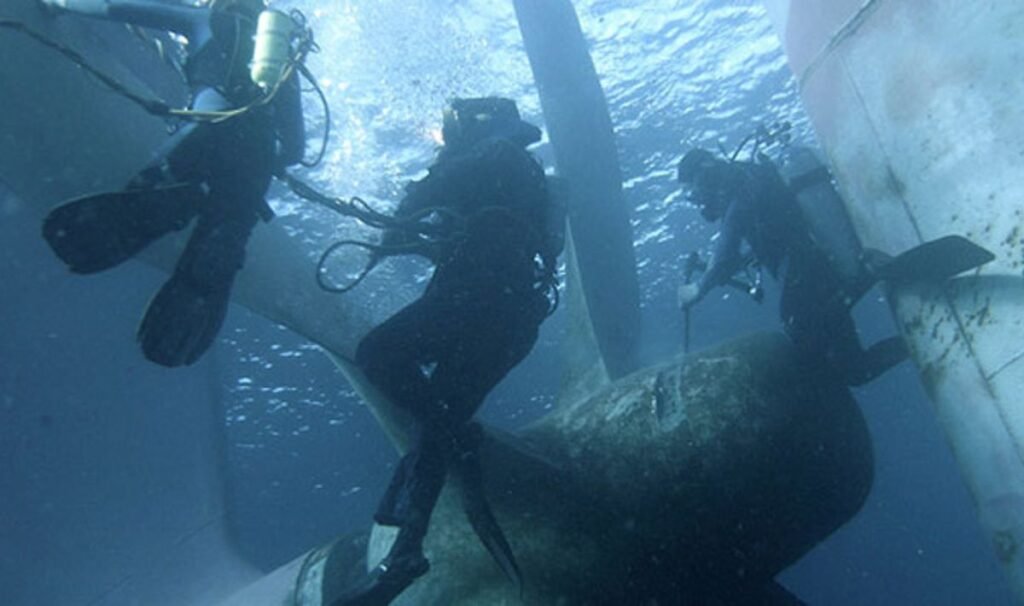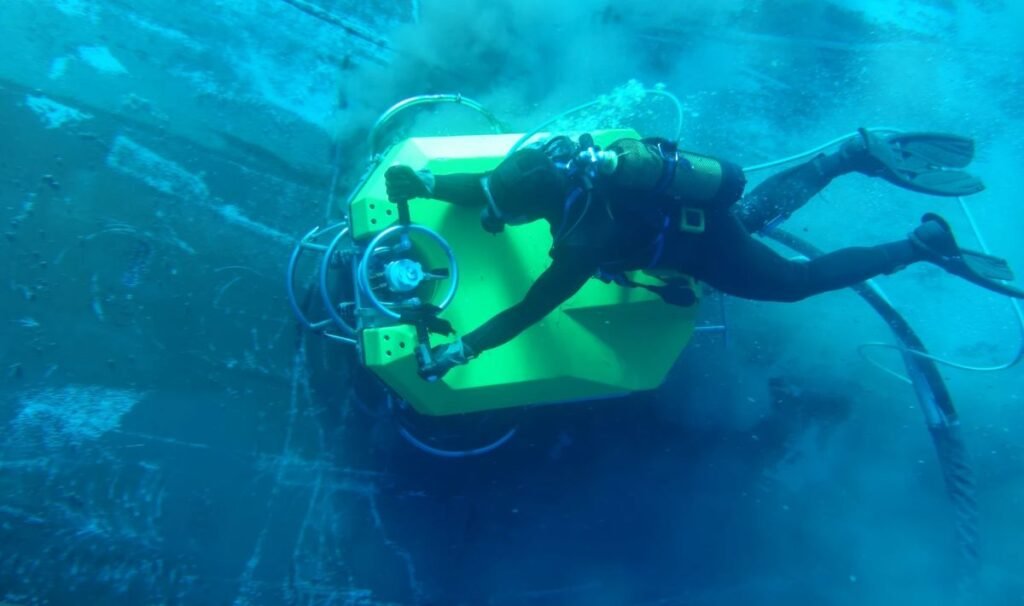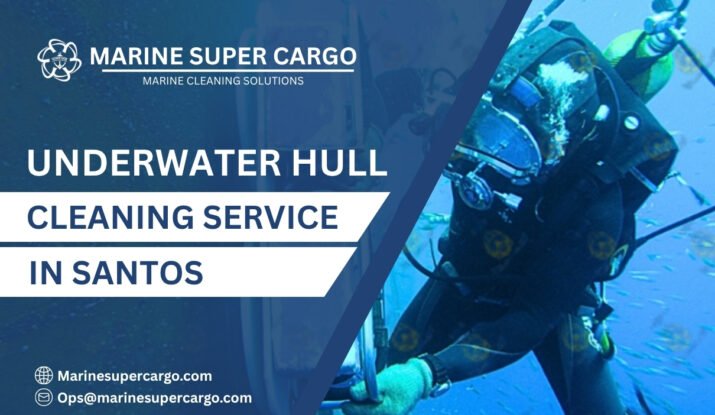You’re watching your vessel steam toward the busy Port of Santos, South America’s maritime super-hub. As it edges closer, unseen trouble lurks beneath—the hull is weighed down with barnacles, algae, and crusty marine invaders. This, my friend, is the silent sabotage of biofouling. If you want your fleet to run smoothly, sip less fuel, and dodge surprises at port inspections, it’s time to master the art and science of underwater hull cleaning in Santos.
Why Underwater Hull Cleaning in Santos is Essential
Imagine running a race with mud-caked shoes. That’s your ship, slogging through water with a fouled hull. In Santos, with its subtropical climate and heavy port activity, biofouling isn’t just common—it’s relentless. Every extra millimeter of growth adds drag, sucking up fuel, cutting your speed, and hiking your emissions right under your nose.
But the problem doesn’t stop at economics. Fouled hulls increase corrosion risk, endanger the marine environment, and sail dangerously close to running afoul of ever-tightening regulations. For any vessel making regular calls to Brazil’s busiest port, underwater hull cleaning in Santos is not just a maintenance chore; it’s the backbone of a successful, compliant shipping operation.
Understanding the Santos Marine Environment
Santos sits at the intersection of river outflow and ocean tides. This cocktail of nutrients creates a breeding ground for barnacles, mussels, algae, and sometimes even invasive species. Local shipping giants know: without consistent cleaning, your once-gliding vessel will soon feel more like it’s hauling a netful of bricks.
Heavy commercial vessel traffic adds another twist—biofouling can build up twice as fast at busy berths or anchorage points. And with shifting currents, microbes and larvae swarm ships’ hulls from all directions.

Biofouling: The Hidden Issue Beneath Your Vessel
You might not see it, but biofouling is always working against you. Here’s what ships typically fight in Santos:
- Barnacles: Tough, concrete-like colonies clinging to any surface.
- Green and brown algae: Fast-spreading layers that act as a sticky base for other creatures.
- Slime, mussels, worms: Nestling in sea chests, around thrusters, and blocking intakes.
- Sun coral (Tubastraea): An invader in Brazil that’s caused new regulatory headaches due to its tenacious grip and environmental risk.
Each layer increases drag, boosting fuel usage and chipping away at your vessel’s protective coatings. Shipowners in Santos recognize that unchecked biofouling can lead to an efficiency loss of 10–25%, enough to turn profits into losses.
Changing Regulations in Santos: What Shipowners Must Know
The rules governing underwater hull cleaning in Santos have recently tightened. As of December 2022, local authorities implemented regulations that:
- Prohibit almost all cleaning, scraping, and barnacle removal activities within port limits, including keel, rudder, propeller, thrusters, and sea chest work.
- Ban polishing, blasting, and underwater suction services within the organized port area.
- Only allow exceptional cases of hull painting or maintenance with prior approval and robust pollution-prevention measures.
What does this mean for you? Most cleaning now happens outside of port waters, carefully coordinated and compliant with strict environmental rules, especially the Brazilian Navy’s Maritime Authority Standards for Water Pollution (NORMAM-20/DPC).
How Underwater Hull Cleaning in Santos is Performed
Despite the roadblocks, modern cleaning technologies still let you keep your hull in top condition—if you operate within these new regulations.
Manual vs. Mechanical Cleaning Methods
Traditional methods rely on:
- Diver-driven scrubbing with handheld brushes or scrapers for sensitive areas or small vessels.
- Rotating mechanical brushes for wider, more stubborn fouling patches.
- Hydrojetting—high-pressure water blasts for thorough cleaning, used cautiously to protect coatings and with equipment tuned to different hull types.
Emerging Technologies: Robots and ROVs
- Hull cleaning robots and ROVs are now making waves, using rotary brushes or high-pressure jets while collecting biofouling waste for safe disposal.
- Some ROVs leverage magnetic or vacuum adhesion, working efficiently over wide hull areas and reducing diver risk.
- These new methods empower longer cleaning intervals, safer operations, and less environmental release of debris.
Environmental Safety and Compliance
Cleanings should never turn the bay into a biohazard. Today, top providers of underwater hull cleaning in Santos prioritize:
- Waste capture: New tech vacuums up biofouling to prevent species drift.
- Eco-friendly chemicals and coatings: Compliant with restrictions on organotin compounds and toxic additives.
- Strict adherence to rules protecting the local marine ecosystem, especially with invasive threats like sun coral on hulls.
When is the Best Time to Schedule Underwater Hull Cleaning in Santos?
Timing is everything. For vessels working in Santos’ demanding waters:
- Schedule outside port limits as legally required.
- Clean every 6–12 months for most commercial vessels—more if heavily fouled or after long idle periods.
- Prioritize cleaning before inspections, international transit, or after operations in areas with high fouling risk.
Regular, well-timed cleaning means less drag, fewer repairs, and no regulatory headaches.
How to Choose the Right Cleaning Provider in Santos
Don’t trust your hull to just anyone. Look for:
- Proven local experience—knowledge of Santos regulations is critical.
- Certification in environmental compliance and diver safety.
- Cutting-edge equipment, including robot and ROV capability for efficient, thorough cleaning.
- Transparent reporting and tech support—so you’re always in the loop.
Step-by-Step: The Process of Underwater Hull Cleaning in Santos
From Inspection to Final Reporting
- Initial hull and propeller survey: Manual or robotic video inspections pinpoint fouling hotspots, corrosion, or damage.
- Planning: Schedule cleaning outside port limits; comply with all environmental protocols.
- Cleaning: Teams use diver-held brushes, rotating heads, or robots with suction collection as needed.
- Debris handling: Collected waste is captured for disposal—never released near the port.
- Documentation: After cleaning, get comprehensive reports, images, and video files for your maintenance records, insurance, and port authorities.

Typical Challenges and Expert Solutions
Navigating new regulations: You can’t just clean wherever and whenever—your provider must know the legal waters as well as the literal ones.
Stubborn biofouling (like sun coral): Manual diver teams are still required for full removal. Some jobs, especially involving invaders, demand extra time, care, and strict containment procedures.
Strong currents and low visibility: Santos waters are busy and unpredictable—choose providers with robust safety protocols and adaptable technology.
Maximizing the Value of Underwater Hull Cleaning in Santos
- Keep a cleaning calendar. Routine attention is cheaper than crisis response.
- Bundle inspections, repairs, and cleaning services for maximum value.
- Track detailed documentation—essential for audits, insurance claims, and long-term asset management.
- Educate your crew to spot fouling and damage early.
Conclusion: Setting Your Vessel Up for Success Underwater Hull Cleaning in Santos
In today’s fast-moving maritime world, underwater hull cleaning in Santos is mission-critical, not just nice-to-have. You get more speed, less fuel burn, and avoid regulatory run-ins, all while protecting Brazil’s beautiful marine ecosystem. Choose a provider that knows the law, uses modern tech, and keeps you compliant. With the right strategy, you’ll glide through the Port of Santos—no hidden anchors, no regulatory surprises, just smooth sailing.
FAQ:
Q1. Can I schedule underwater hull cleaning inside the Port of Santos?
Q2. Which cleaning methods are allowed for underwater hull cleaning in Santos?
Q3. How does hull cleaning protect the marine environment?
Q4. How often should I plan underwater hull cleaning in Santos?
Most shipowners clean every 6–12 months, with increased frequency for vessels in heavy service, after long lay-ups, or before port state inspections.


